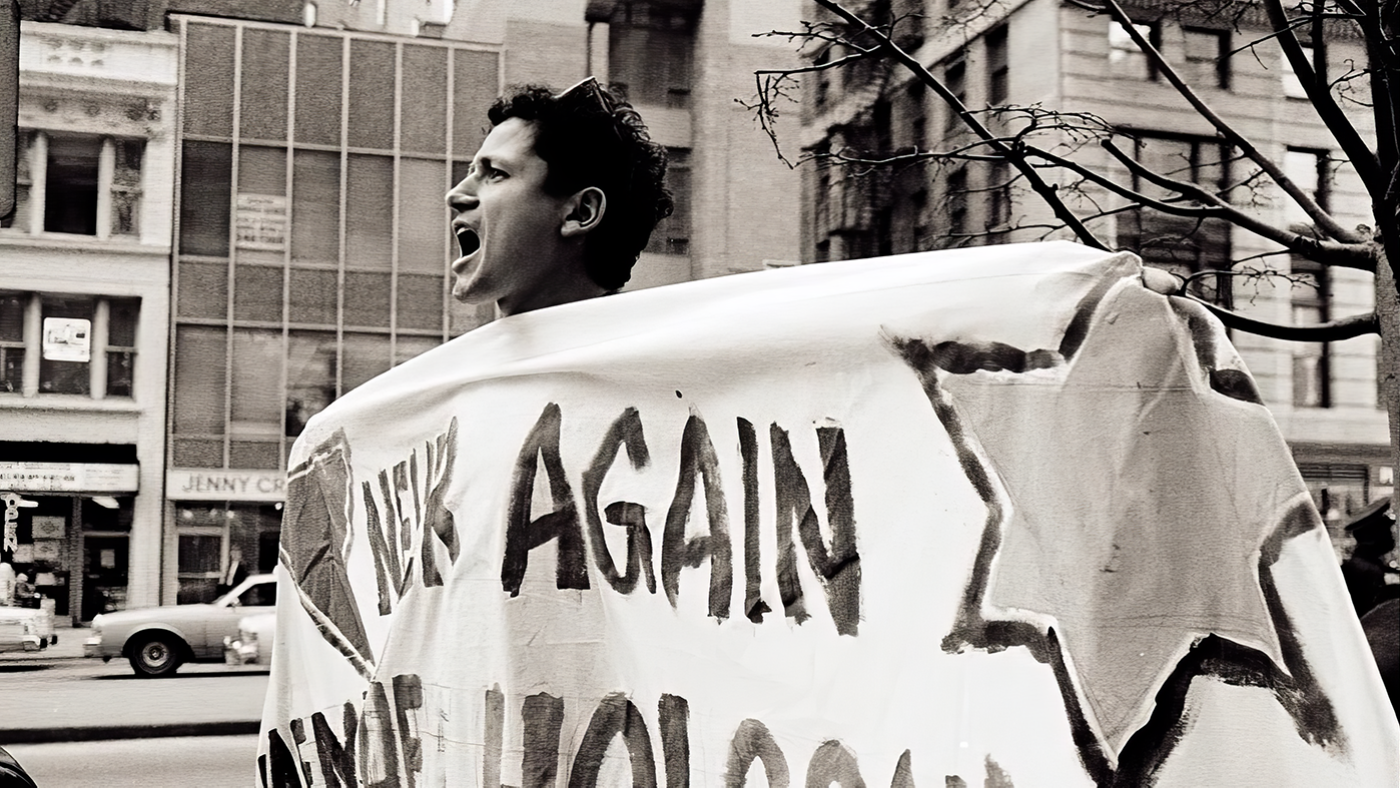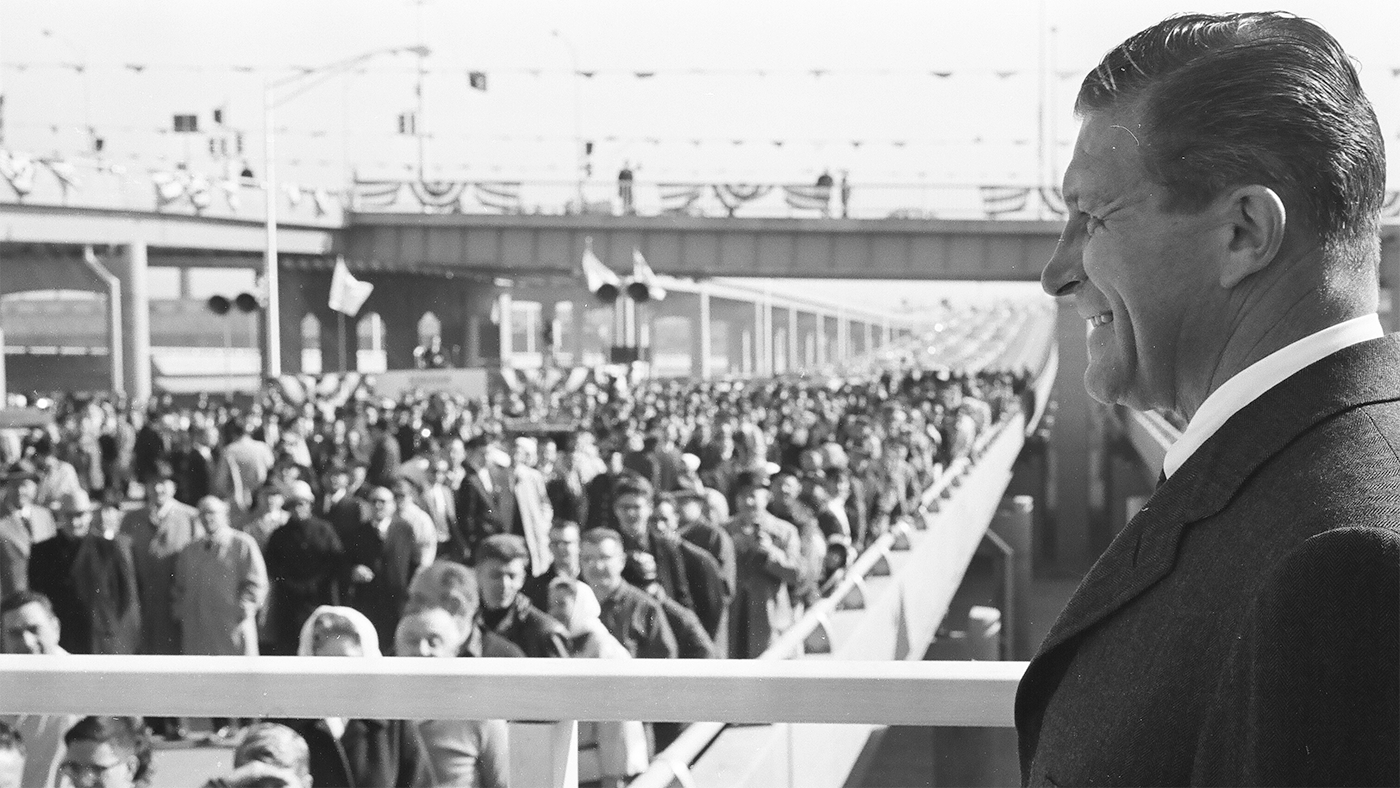A Chicagoan Who Wouldn't Take No for an Answer
Julia Maish
June 20, 2024

Chicago Stories: The Outrage of Danny Sotomayor airs Friday, June 28 at 9:00 pm and is available to stream on the PBS app or at wttw.com/sotomayor, where you can learn even more about Sotomayor's life and the AIDS crisis in Chicago.
Chicago Stories: The Outrage of Danny Sotomayor tells the story of a Chicagoan who wouldn’t take no for an answer. Sotomayor was a tireless crusader for equal rights who skillfully used civil disobedience to fight for AIDS treatment for his community while battling the disease himself. The film’s producer-writer Dan Andries tells us more about Sotomayor’s life and work.
This interview has been condensed and edited for clarity.
Danny Sotomayor might not be a household name, but he made a big impact. Why did you choose to tell the story of Chicago AIDS activism through one individual?
The first time I learned Danny’s story, and saw video of him in action, I was entirely captivated. The more we learned about him, the more we thought the story was so powerful, and encapsulated so much of what was happening at the time here in Chicago, that it had to be a documentary. I’m always hoping to find a way to center a story around one person the audience can really come to know, and when their story sits so powerfully in the center of a larger story, it really is a great gift.
How did the AIDS crisis impact Chicago’s LGBTQ community?
It was devastating, just as it was everywhere. And its life-and-death stakes pushed the LGBTQ community to become more visible. A lot of the organizing around the AIDS crisis led to an increase in people effectively advocating for their rights, and for support, and to the creation of institutions that are still going strong. AIDS changed everything.
Sotomayor himself was diagnosed with and died of complications from AIDS. How do his friends and fellow activists in the documentary remember Sotomayor?
Danny died much too young, at 33, and he was beloved. He is remembered as a wonderful spirit, a good friend, and a forceful advocate. Danny didn’t shy away from confrontation, and some of his closest friends knew that meant that he could be a thorn in the side of anyone – anyone! – that he deemed too complacent. But people appreciated and still continue to respect his commitment.
Sotomayor was also a cartoonist. How did he use his art as a form of activism?
His cartoons, mostly single panels, were unrestrained attacks on complacency, homophobia, political inaction, and the overall indifference that many had for those who suffered from and died of AIDS. And his cartoons could be wickedly funny. His bravery was often at odds with the agenda of his publishers, but he never backed away from telling it as he saw it.
Much of the documentary shows footage of some of the larger protests that ACT UP and other groups staged. What impact did these demonstrations have on the AIDS crisis in Chicago?
ACT UP Chicago’s demonstration in April 1990 led to Cook County Hospital quickly opening its AIDS ward to women for the first time. Other demonstrations had the effect of keeping the issues visible, whether they were inflated insurance rates for LGBTQ people, underfunding of healthcare for people with AIDS, or harmful messaging around the disease that left people more confused than enlightened. ACT UP Chicago saw all attention as a victory, and every action, each demonstration, had a specific target with a clear outcome they were after.
How is the story of Danny Sotomayor a uniquely Chicago story?
Danny grew up in Humboldt Park, having been born into a Puerto Rican/Mexican Catholic family that didn’t have a lot of money, in a household that was destabilized by domestic violence. Chicago in the 1970s offered a kid like Danny places where he could find a community free of casual racism, support for his art, and a neighborhood where it was good to be gay. The city’s long legacy of street activism, which stretches back into the 19th century, meant that he could find people here with whom he could connect, and develop his deep talent for organizing and inspiring others. I think all of that makes this a uniquely Chicago story.
What do you hope viewers will take away from this documentary?
I hope people are reminded that raising their voice, standing up to and challenging power, and believing they can make the world a more just place is one of the great rights we have in this country. And that to do what Danny did is as legitimate a way of participating in our democracy as voting. I also hope that Danny’s story, and the stories of his friends, acts as an inoculation against hate in any form. The reality of how hard it can be sometimes simply to be alive challenges all of us to be compassionate with each other.







